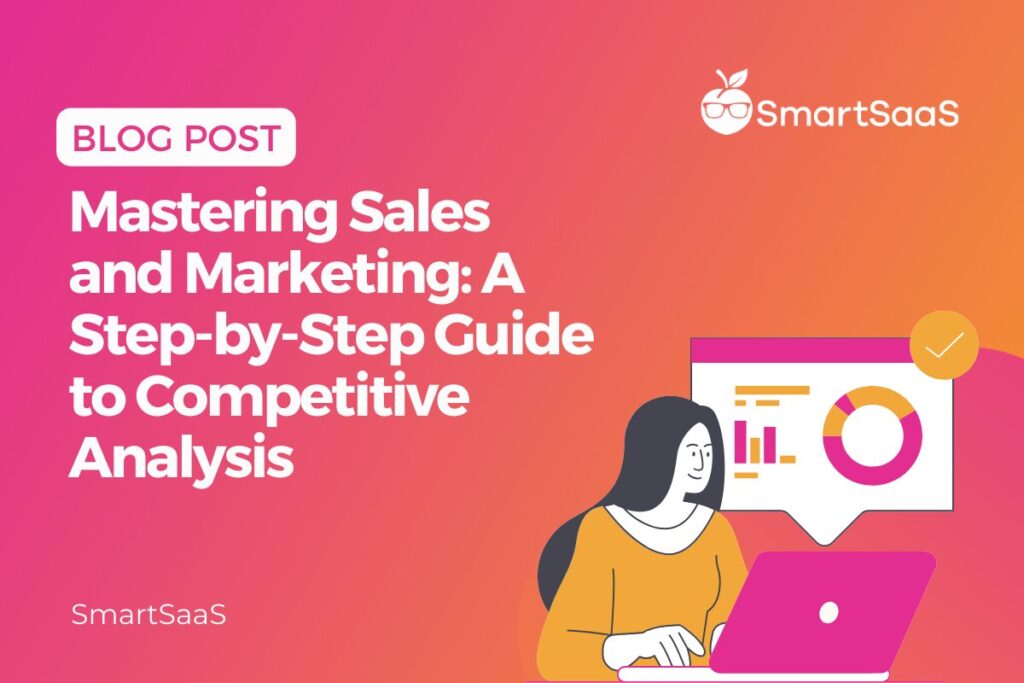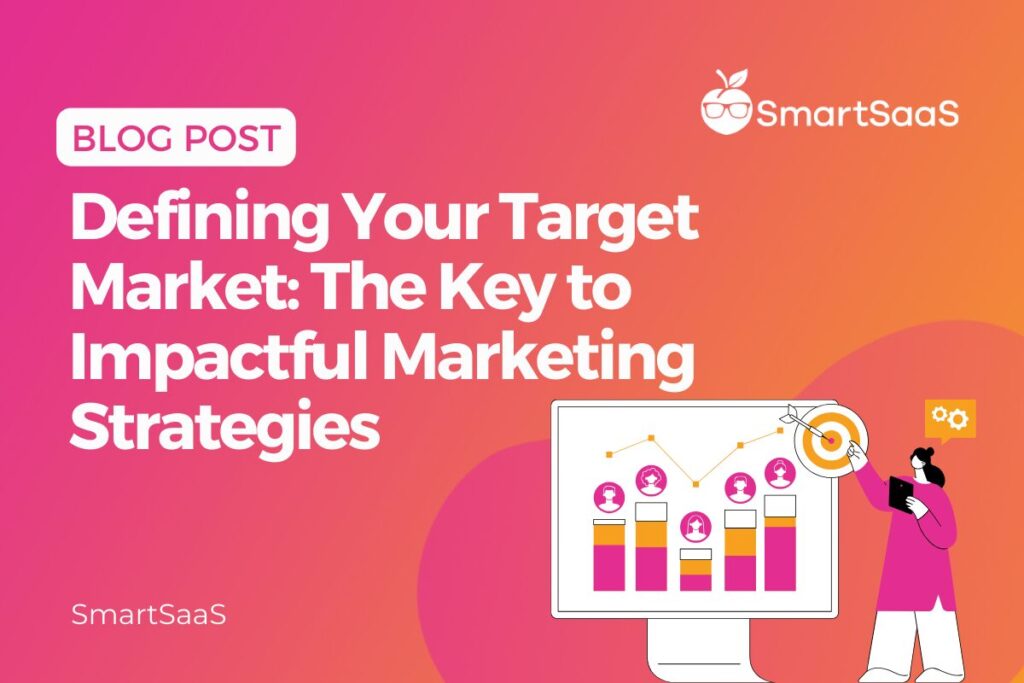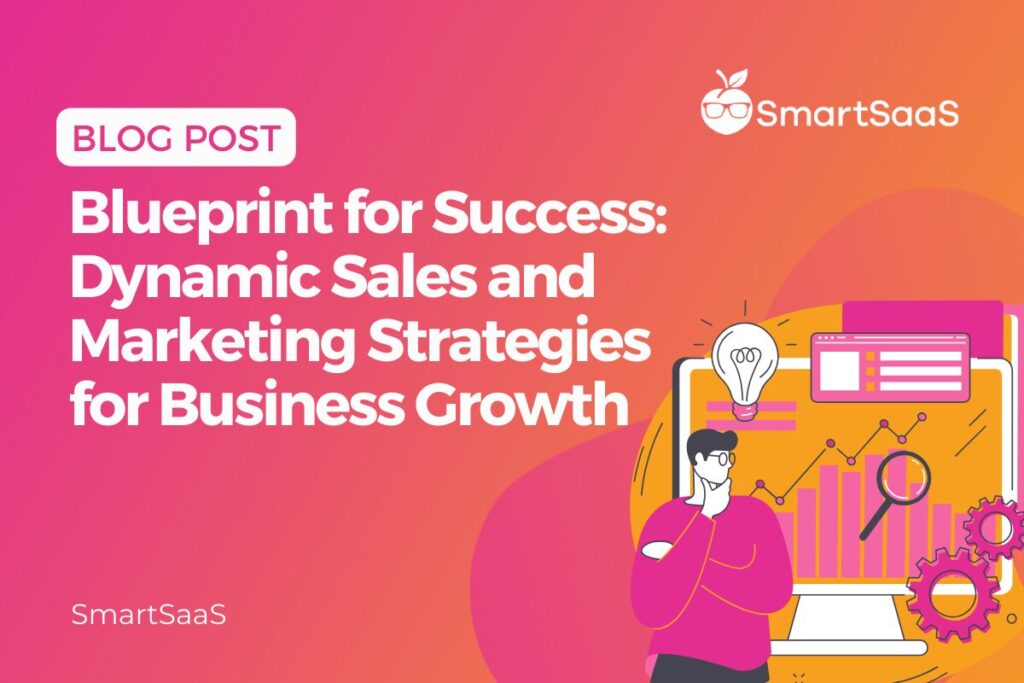A Step-by-Step Guide to Competitive Analysis

For entrepreneurs, understanding your competitors is critical. Doing proper competitive analysis helps you gauge how your business stacks up against others in your space. It provides essential information about your strengths and weaknesses, allowing you to fine-tune your sales and marketing tactics for a competitive advantage. In this blog post, we’ll guide you through the process of conducting effective competitive analysis from beginning to end.
Why Competitve Analysis Matters
Before getting into the nitty gritty, let’s look at why competitive analysis should be a top priority for your business:
- It helps you identify marketplace opportunities and win more business. When you understand competitors’ weaknesses, you can meet unmet customer needs.
- It allows you to differentiate and stand out. By benchmarking against others, you can better showcase your unique value proposition.
- It informs sales enablement. Knowing competitors helps sales teams better position against them during the sales cycle.
- It guides go-to-market strategy. Analyzing competitors’ messaging, branding, pricing, and more prevents you from blending into the crowd.
- It highlights areas for improvement. Seeing where competitors excel can motivate you to improve your game in specific areas.
In other words, competitive analysis leads to data-driven decisions and more refined customer-focused sales and marketing. It helps you identify opportunities and capitalize on your strengths.
How to Conduct Competitive Analysis
Step 1: Identify Your Key Competitors
Start by making a list of your direct competitors – companies selling similar products or services to your target customers. The key is focusing on your ten closest competitors, the ones most likely to steal business from you.
Look beyond just the service or product category when identifying these rivals. Any company solving the same problem or pulling from the same budget is a competitor. Consider factors like:
- Target customers – Companies selling into the same niches or segments
- Business model – Those using similar sales and distribution channels
- Messaging – Ones with comparable branding and positioning
- Pricing – Those in a similar price bracket
Additionally, note any indirect or adjacent competitors customers may compare you to, even if they have somewhat different offerings. These could provide useful context when evaluating your capabilities versus the market. Spend time clarifying who your true competitors are so the rest of your analysis zooms in on the right benchmarks.
Step 2: Research Their Offerings
Perform in-depth research on your key competitors’ products, services, and capabilities. Get to know their business almost as well as your own! Below are the things to look at:
Products and Services
- Product lines – The full range of products and services they offer. How broad or focused is their portfolio compared to yours?
- Core products – Their most popular or highest-selling offerings. Do they align with your best sellers or differ?
- Product features – Specific capabilities, functions and features in their products. How do these compare to your product features?
- Product quality – How reliable, durable, and well-made their products are perceived. How does it compare to the quality reputation you have?
- Technology – If they utilize proprietary technology, APIs, or unique tech capabilities you don’t have.
- IP – Any patents, trademarks, or copyrights protecting their products and intellectual property.
Messaging and Positioning
- Value proposition – What core customer problems or needs do they claim their product solves? How does it align with your value proposition?
- Target customers – Which customer segments, industries, or niches do they aim to serve? To what degree do your targets overlap?
- Brand image – The personality, identity, tone, and voice reflected in their messaging and branding. How does your brand image compare?
- Thought leadership – Any content, campaigns, or partnerships establishing expertise and credibility as an authority voice.
Go-to-Market Strategy
- Pricing – Their price points, discount structures, bundled packages, payment terms, financing options, etc. How does it compare to your pricing model?
- Sales model – Do they sell directly, through resellers, affiliates, wholesale channels, or some hybrid model?
- Marketing and ads – The specific marketing channels, campaigns, assets, and budget they deploy. Contrast this to your marketing strategies and programs.
Step 3: Analyze Their Online Presence
An in-depth look at competitors’ digital footprint can reveal a goldmine of insights. Accomplish both quantitative and qualitative assessments of these critical elements:
Website Features
- Site design – The visual design, layout, navigation, features, and overall user experience of their site. How does it compare to your website’s design and UX?
- Conversion optimization – How well does their site converts visitors into leads and customers. Examine calls-to-action, lead gen forms, and customer signup flows. How could you improve your conversion optimization?
- Site speed and tech – How fast pages load, mobile optimization, backend tech powering the site. How does their technical performance compare to yours?
- Site content – The types of pages and content they have, like product pages, blogs, resources, etc. How does their overall content strategy compare?
- Search visibility – The keywords and terms they rank for, their overall search traffic, and visibility in SERPs. Contrast to your organic search performance.
SEO Performance
- Keyword rankings – Which terms do they outrank you for and vice versa to compare strengths?
- Local SEO – Their optimization for local search rankings and map listings if location-based.
- Backlink profile – The quantity and quality of backlinks pointing to their domain. Analyze via tools like Ahrefs.
- Content marketing – The types of blogs, videos, and content they use to build organic search traffic.
Social Media and Content
- Content marketing – Their blog, videos, podcasts, ebooks, and other content formats. How does their overall mix compare to yours?
- Social media – Their presence, following, engagement rates, and community-building on each social platform.
- Influencer marketing – Any partnerships or co-marketing with influencers in your niche.
- Reviews and reputation – Online ratings, reviews, and general sentiment toward their brand across the web. How does your reputation compare?
This digital assessment surfaces how findable competitors are online and who’s winning the battle for visibility. It also shows where they are outperforming you digitally.
Step 4: Talk to Your Customers and Prospects
While conducting your own research is vital, viewing competitors through your customers’ eyes is crucial. Speaking directly to your customers provides a unique perspective.
Some smart ways to incorporate customer feedback:
- Casual conversations – Ask customers their thoughts on competitors naturally in discussions. Go deeper with sales prospects to understand their views during the evaluation process.
- Surveys – Build short surveys to gauge customer perceptions of competitors’ brands, pricing, quality, services, etc.
- Win/loss analysis – Interview those you won deals with and lost deals to. Learn how you measured up against competitors in both cases.
- Focus groups – Gather small groups of customers to discuss competitors in an open setting and hear unfiltered feedback.
- Mentions analysis – Use social listening and brand monitoring tools to see who customers are talking about.
The qualitative insights from conversations reveal nuances missed by your research. They highlight areas to double down on and competitors’ weaknesses to target.
Step 5: Compare Your Capabilities Side-by-Side
Making side-by-side comparisons highlights your competitive advantages and disadvantages. This allows you to play to your strengths and close gaps where competitors have an edge.
Specifically, call out:
- Areas you lead in – Showcase these points to customers to win against competitors. Lean aggressively into them in messaging and positioning.
- Areas competitors lead – Be honest about where you lag behind. These become opportunities to improve and adapt your strategy.
- Unmet needs – Note any customer problems competitors fail to solve well. Address these needs with tailored messaging and offers.
Step 6: Uncover Opportunities
Now comes the most valuable part – uncovering tangible opportunities from your findings. Think through how to apply insights from the competitive analysis to fuel your success.
Find Areas to Differentiate
Look for areas where your capabilities are superior to competitors. If your product has innovative features they lack, highlight this in messaging to stand out. If your support is faster and high-touch, showcase this advantage. If you offer faster shipping, tout it boldly.
The goal is to isolate your differentiated strengths. Then, feature these prominently in branding, campaigns, content, and sales conversations. When you consistently communicate areas of competitive advantage, it makes you shine in customers’ eyes.
Improve Where Lacking
Next, pinpoint areas where competitors have an edge over you. Maybe they have stronger organic visibility, a more engaging social media presence, or a slicker website.
Make it a priority to invest and catch up in these areas. Set specific goals like improving loading speeds, launching a blog, or revamping UX. Incremental gains here pay rewards over time as you erase any competitive gaps.
Step 7: Monitor and Update Regularly
Markets evolve quickly, so it’s essential to monitor competitors and update your analysis frequently. Set a reminder to refresh it each quarter to keep insights relevant.
Watch for these events and changes:
- Take note of new offerings or features – If competitors launch new products, product enhancements, or bonuses. These could influence customer perceptions. Respond with comparable offerings if needed.
- Rebrands – Pay attention if a competitor repositions their brand, refreshes their visual identity, or overhauls messaging. Determine if it shifts the share of voice in the market.
- Marketing changes – Look for shifts in competitors’ marketing campaigns, segments targeted, promotions used, channels leveraged, etc. Adjust your marketing mixes accordingly.
- Leadership changes – New executives, especially CEOs, can radically change strategic direction. Closely follow mergers, acquisitions, or leadership moves.
- Buzz and press – Track media coverage, influencer commentary, and reviews mentioning competitors. This signals how market winds are shifting.
Regular monitoring provides an up-to-the-minute pulse on competitive dynamics. It allows you to evolve strategies to match and outmanoeuvre rivals continually.
Set a calendar reminder each quarter to revisit your analysis. Update all metrics, refresh research, and add new insights. Competitive intelligence gathering is an ongoing activity, not just a one-time project.
To Wrap Things Up
Performing thorough competitive analysis is vital for sales, marketing, and product development. It provides a clear view of where you stand in comparison to other options in the market, highlighting your strengths, weaknesses, and potential areas for growth.
With the guidance provided here, you’re equipped to conduct meticulous research, engage with customers, and turn those insights into strategic initiatives. However, it’s important to maintain ongoing monitoring of your competitive landscape.
Effective competitive analysis leads to better positioning, messaging, and product offerings. By consistently staying a step ahead, you can foster growth and enhance customer satisfaction in a competitive environment. Apply these strategies to maintain and strengthen your edge in the long term.





Responses